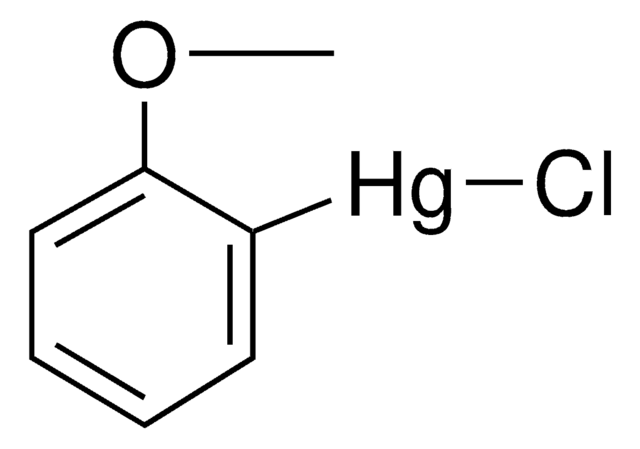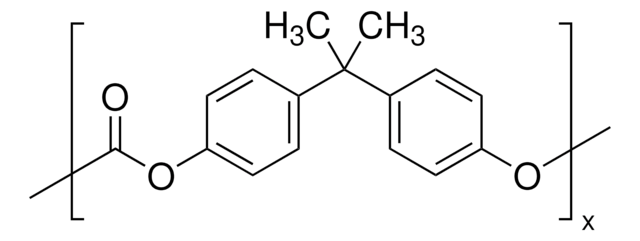123226
Anisole
ReagentPlus®, 99%
Synonyme(s) :
Methoxybenzene, Methyl phenyl ether
About This Item
Produits recommandés
Densité de vapeur
3.7 (vs air)
Niveau de qualité
Pression de vapeur
10 mmHg ( 42.2 °C)
Gamme de produits
ReagentPlus®
Pureté
99%
Forme
liquid
Température d'inflammation spontanée
887 °F
Limite d'explosivité
0.34-6.3 %
Indice de réfraction
n20/D 1.516 (lit.)
Point d'ébullition
154 °C (lit.)
Pf
−37 °C (lit.)
Densité
0.995 g/mL at 25 °C (lit.)
Chaîne SMILES
COc1ccccc1
InChI
1S/C7H8O/c1-8-7-5-3-2-4-6-7/h2-6H,1H3
Clé InChI
RDOXTESZEPMUJZ-UHFFFAOYSA-N
Vous recherchez des produits similaires ? Visite Guide de comparaison des produits
Description générale
Application
Informations légales
Mention d'avertissement
Warning
Mentions de danger
Conseils de prudence
Classification des risques
Flam. Liq. 3 - STOT SE 3
Organes cibles
Central nervous system
Code de la classe de stockage
3 - Flammable liquids
Classe de danger pour l'eau (WGK)
WGK 2
Point d'éclair (°F)
109.4 °F - closed cup
Point d'éclair (°C)
43 °C - closed cup
Certificats d'analyse (COA)
Recherchez un Certificats d'analyse (COA) en saisissant le numéro de lot du produit. Les numéros de lot figurent sur l'étiquette du produit après les mots "Lot" ou "Batch".
Déjà en possession de ce produit ?
Retrouvez la documentation relative aux produits que vous avez récemment achetés dans la Bibliothèque de documents.
Les clients ont également consulté
Notre équipe de scientifiques dispose d'une expérience dans tous les secteurs de la recherche, notamment en sciences de la vie, science des matériaux, synthèse chimique, chromatographie, analyse et dans de nombreux autres domaines..
Contacter notre Service technique














